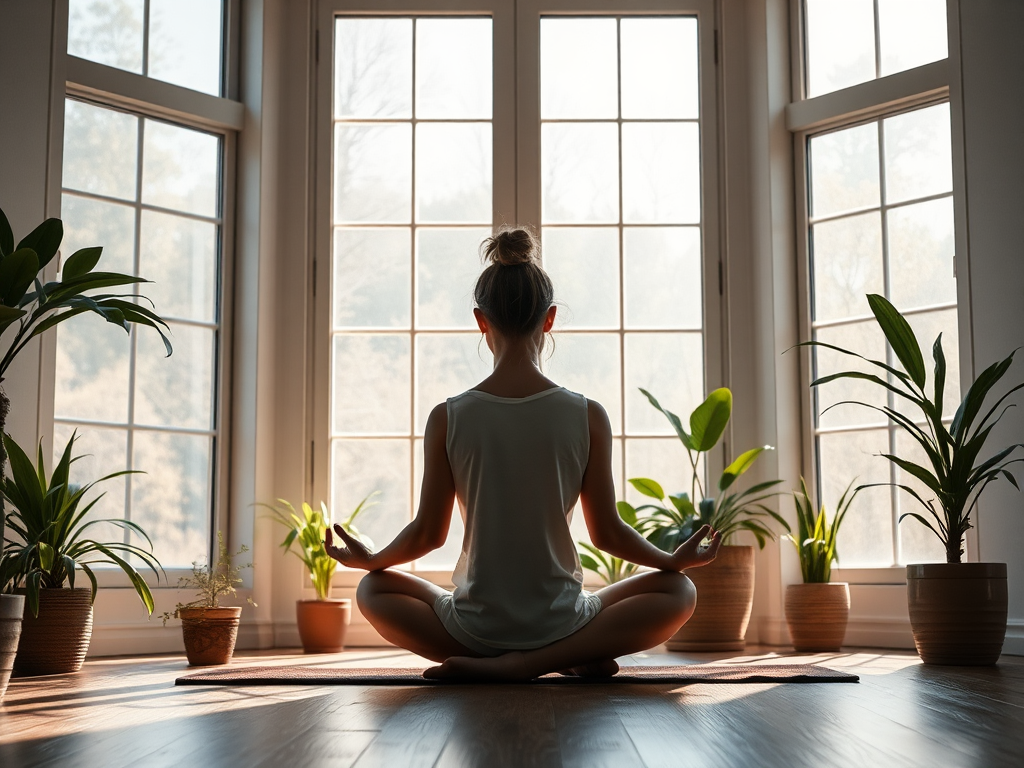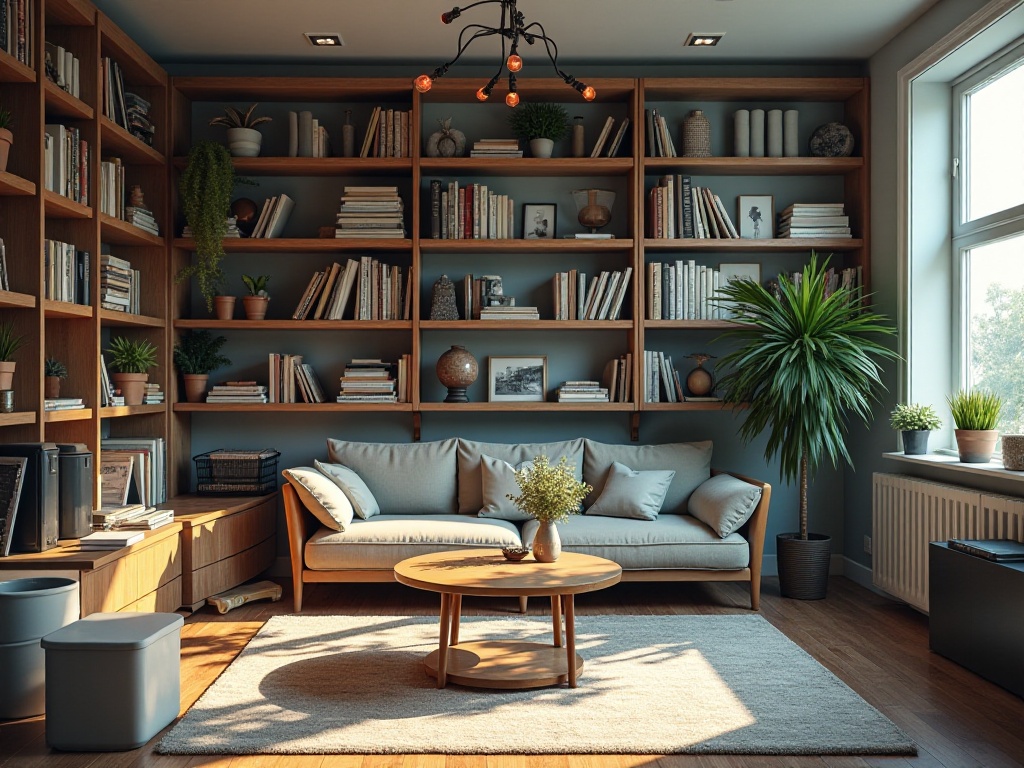Introduction
Fellow fitness enthusiasts, today I'll share how to set up a professional-grade home gym! As someone who's been dedicated to home workouts for over two years, I truly understand the importance of a good training environment. I remember when I first started working out at home - it was a mess! Dumbbells scattered in the living room, resistance bands randomly placed in the bedroom. The whole house felt like my gym, yet nowhere felt quite right. After much trial and error, I've figured out a reliable setup strategy, which I'll share with you in detail today.
Location Selection
First, we need to find a dedicated workout space - this is crucial. I recommend at least 6 square meters, because whether you're doing floor stretches or high knees, you need enough room to move. Living rooms or study rooms work well. In my case, I transformed a quarter of my study into a mini fitness zone, and it works great!
Once you've chosen your space, flooring is essential. If you have wooden floors, I strongly recommend laying down 2cm thick EVA foam mats. This is crucial - it not only protects your floor but also reduces noise. Let me tell you something: my downstairs neighbors used to complain about my workouts, but since installing these mats, they haven't knocked on my door once - money well spent!
Natural lighting is another important factor. If you can choose a spot with windows, that's ideal. Natural light not only improves mood but also saves on electricity. My workout area faces a south-facing window, and when sunlight streams in, I feel energized.
Temperature and humidity need consideration too. In summer, ensure good ventilation or air conditioning; in winter, maintain warmth without overheating. I adjust seasonally - placing a fan near the window in summer and lowering the radiator temperature in winter for comfortable workouts.

Equipment Setup
Regarding equipment, many people immediately think of power racks and Smith machines for home workouts. That's unnecessary - let's start with the basics:
A yoga mat is essential! I recommend NBR material, 1-1.5cm thick. Don't take this suggestion lightly - it's based on countless trials. My current mat cost $89, has lasted two years, and still performs excellently with good elasticity and non-slip properties.
Dumbbells are necessary, but weight varies by individual. Women might start with 1-3kg, while men typically do well with 3-5kg. I suggest starting with water bottles before buying dumbbells - this saves money and prevents unused equipment.
Resistance bands are home fitness miracle workers! Honestly, I was skeptical about their effectiveness at first. But after one back workout that left me sore the next day, I was convinced. Get the sectional type with different colors indicating different resistances, and adjustable lengths - super practical.
For best value, yoga balls are unbeatable. A 65cm diameter ball helps with core training, stretching, balance exercises, and can even serve as a chair. Mine cost $79 and hasn't leaked after over a year - very durable.
If budget allows, consider adjustable dumbbells. Though pricier, they're space-efficient and versatile. I bought a pair last Singles' Day, adjustable from 2.5-24kg, meeting almost all strength training needs.
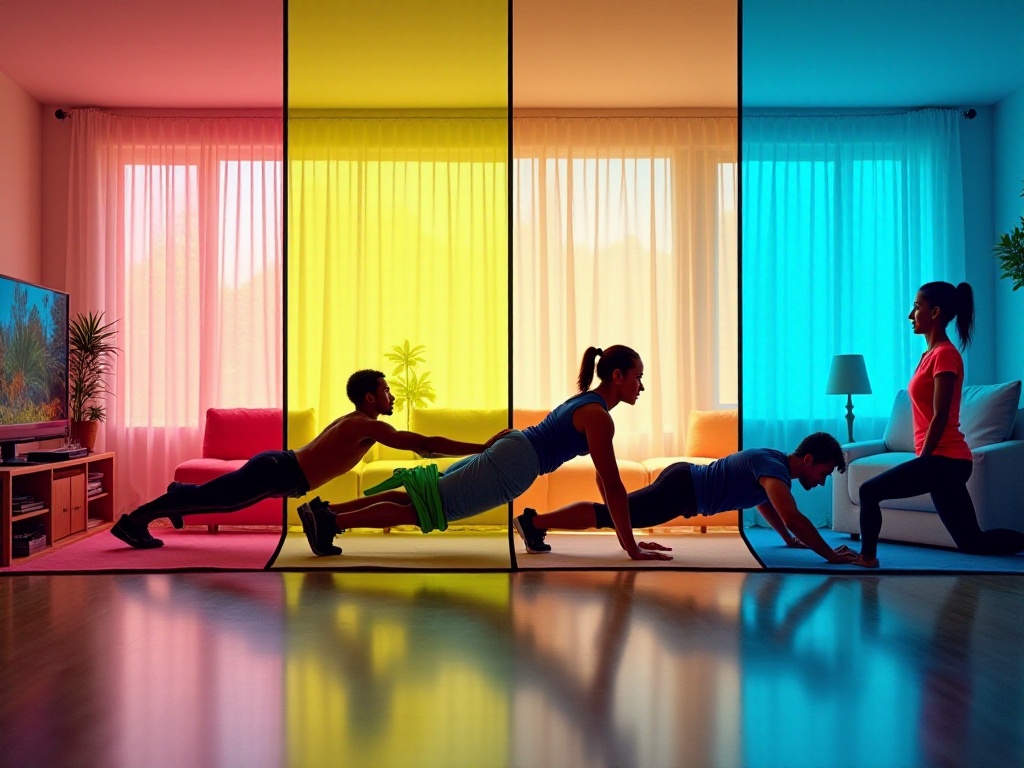
Space Layout
Space layout is all about accessibility. From my two years of experience, here's what works best: Roll up the yoga mat with a strap and stand it in a corner for easy access. I installed a simple rack on the wall for dumbbells - practical and decorative. Resistance bands are simplest - just hang them on a wall hook.
A full-length mirror is a worthy investment. I initially thought it was unnecessary until I noticed my knees going past my toes during squats. With a mirror, you can correct form in real-time for both yoga poses and weight training, preventing injury. I chose a 1.5-meter tall mirror opposite the training area, with adjustable angles.
Consider movement flow in your layout. When transitioning between exercises, equipment placement should allow smooth workflow. For example, if I'm moving from push-ups to high knees, the mat needs to be about a meter from the wall for smooth transitions.
If you have pets, consider their space too. My cat loves joining workouts, so I placed their bed near the training area - they can watch without interfering.
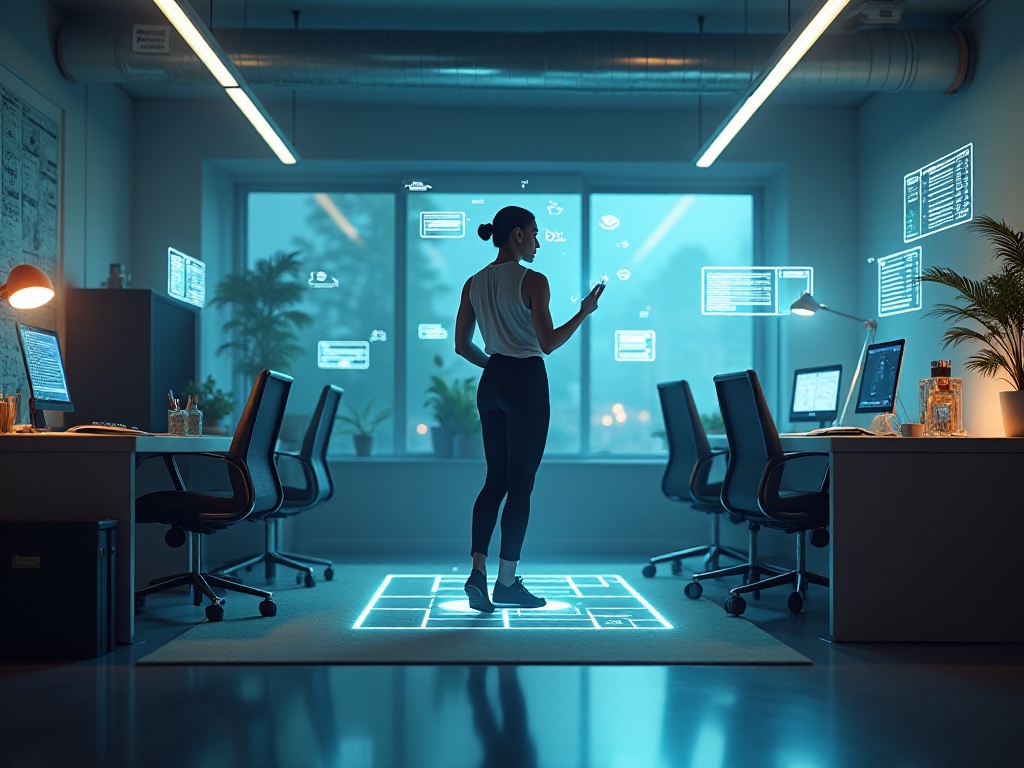
Environmental Setup
For lighting, natural light is key during daytime workouts. For evening sessions, I strongly recommend warm LED smart bulbs at about 60% brightness. I used to have regular fluorescent lights that felt oppressive, like being in an exam room. Smart bulbs allow adjustment of brightness and color temperature, controllable via phone - super convenient.
Ventilation is crucial. My solution was placing an air purifier near the window, maintaining fresh air while managing allergies. The purifier also displays temperature and humidity data, adding a professional touch.
Wall decor matters for atmosphere. I hung fitness inspiration posters - seeing their muscular definition motivates me. A whiteboard for tracking training plans and progress helps too - watching goals being achieved is satisfying.
Audio equipment enhances the training experience. I installed a waterproof Bluetooth speaker with good sound quality - perfect for sweaty workouts. Energetic music really gets you pumped up.
Storage Solutions
Let me emphasize storage - even the best equipment becomes clutter when disorganized. Here's my system: a three-tier storage rack with yoga mats and resistance bands on top, dumbbells in the middle for stability, and towels and water bottles at the bottom for easy washing access.
I keep a small cart beside the rack for cleaning supplies like wipes and alcohol spray. Disinfecting equipment after use is essential. The wheeled cart makes cleaning convenient.
I labeled all equipment with usage instructions and precautions. This helps me and family members use equipment properly and reminds me to check for maintenance needs.
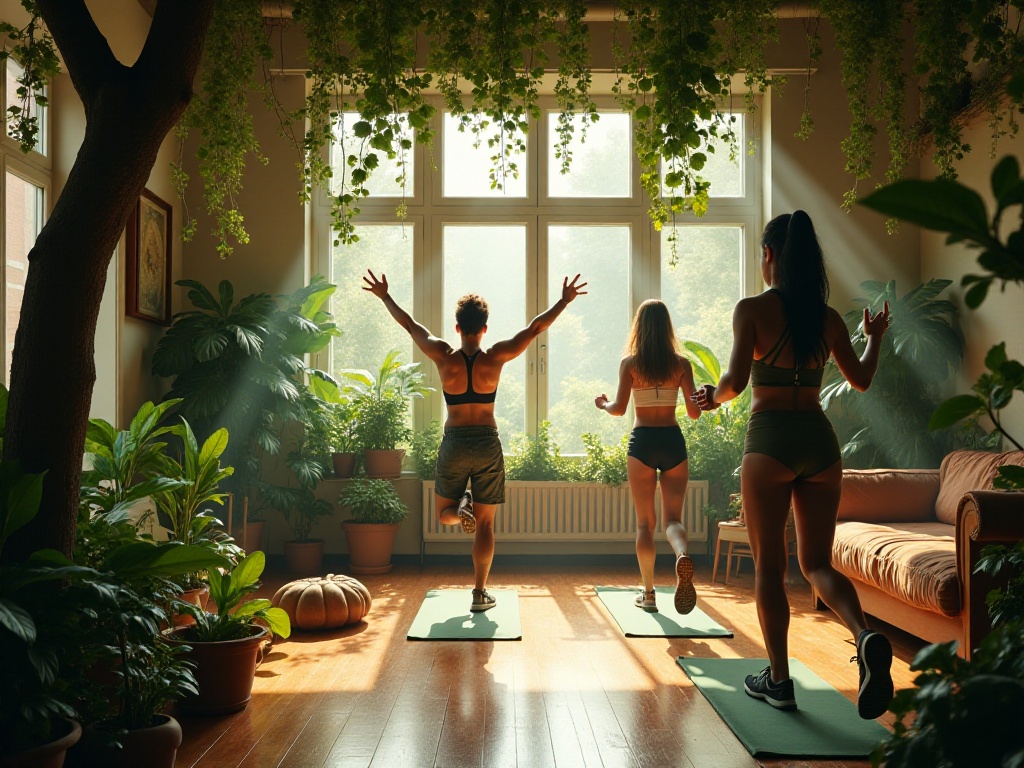
Smart Upgrades
Smart technology can significantly upgrade your home gym. My smart scale is amazing - measuring not just weight but also body fat, muscle mass, BMR, and over twenty other metrics. Best of all, it syncs data to a phone app, creating graphs showing body changes.
Fitness trackers are great assistants. Mine monitors heart rate, counts steps, and recognizes different exercise modes. During HIIT, it tracks time and calories per set, offering professional advice on intensity adjustments.
If budget allows, consider a smart camera. It records workouts and analyzes form. Reviewing videos helped me notice my unstable squat form, leading to improved results after correction.

Conclusion
Creating an ideal home gym is about attention to detail. Even small spaces can yield great results when properly organized. Home workouts save commute time - just shower right after training, perfect!
Practical Tips
Some final practical tips: Always disinfect equipment - it's about hygiene and longevity. Keep music volume moderate, especially in apartments. I avoid training during lunch breaks and after 10 PM to respect neighbors while maintaining consistency.
Balconies can work well if indoor space is limited. A friend converted their balcony into a workout area with mats and simple equipment racks - great lighting and ventilation. Just consider sun protection and rain coverage.
Mat selection is crucial - get one large enough to cover your entire workout area. My first mat was too small, causing constant readjustment. I eventually bought another to connect them, providing ample space.
Most importantly, develop good storage habits. Always return equipment to its place and clean mats after use. This maintains organization, prevents accidents, and preserves equipment condition.
Related articles



